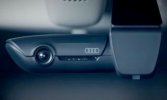I suspect radio will be around a long time. It may have a reduced number of stations compared to todays offerings but I believe it will continue. Talk radio will probably always exist locally. If the new music does not improve music radio could kill itself.
The content of today's radio will always exist in some form or other, but actual radio broadcasts on AM, FM, DAB, DTTV, satellite TV/Radio, are no longer a good solution for distribution of that content. Nearly all of us have good connection to the internet, which means we have access to perfect quality streamed radio stations and podcasts via the internet, and I think it is fair to say that I now have a more reliable connection to radio via the internet than via broadcast in nearly all situations. Also, internet access is one of the basics of the country's infrastructure, along with water, electricity, physical mail, access to road transport, everybody should have access, while the radio broadcast system has only ever targeted a large percentage of the population. There have always been many places where FM radio and TV reception was difficult/impossible and many more places with a very limited number of channels, DAB is significantly better but still many places without it, UK only has one radio station that can be received anywhere in the UK and that is on LW so not great quality. With internet radio accessible by everyone, radio broadcasts, terrestrial or satellite are redundant.
Most of the radio I now listen to is via the internet, sometimes for live stuff I stream it via internet, sometimes I listen to it live on DTTV because it is a couple of mouse clicks less to access it, but normally, apart from news broadcasts, I listen to radio program podcasts, accessed via computer if in my living room or via phone (wifi/mobile internet) everywhere else, including when in the car or walking. Podcasts have the big advantage of not fading out when you go through a poor reception area, and you can queue/download them so that you don't run out if spending a long time in a zero reception area. The only exception is my alarm clock radio which is DAB and I often listen to the news on, but I only use that because I already have it, in reality it is my phone that I use as my main alarm clock, and that has perfectly good internet radio that could be used.
The only good argument for not turning off all radio/TV broadcasts sometime in the next two decades is that even with government commitments to internet and mobile phone access for everyone, some people still can't access the internet, but the Starlink satellite network is going to take care of that. Hopefully it will not stay as a monopoly for long and won't fall under Trump control, but I suspect that like the GPS system it may be a few decades and need government intervention from Russian/European/Chinese governments on security/military and public infrastructure grounds before a Galileo type competitor emerges and we have good cheap reliable internet access everywhere above ground level. These will probably get military funding since with the increase in space weapons (escalated by Trump's Space Force), normal military communication satellites are at risk, while shooting down the highly redundant system of 40,000 tiny Starlink satellites to prevent military communication is going to be a much bigger challenge and
MAD on the basis of space debris!


